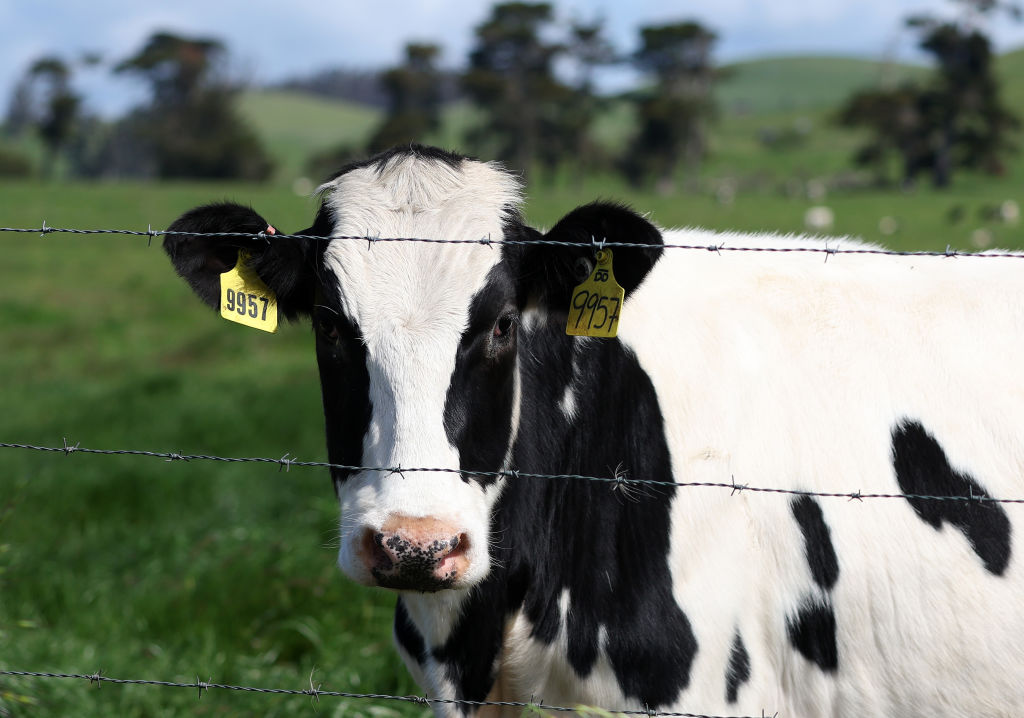A total of seven people who were in close contact with a bird flu patient in Missouri developed symptoms, the Centers for Disease Control and Prevention said Friday, but it remains unclear whether these represent cases of human-to-human spread of the virus.
Antibody blood test results, which will come back later this month, officials said, are needed to answer that question. Since most of the seven people weren’t tested for bird flu, it’s not yet known whether any of them were infected with the virus or another pathogen.
The Missouri patient, who didn’t have known contact with poultry or dairy cows, was hospitalized in August with underlying medical conditions.
On a call with reporters Friday, Dr. Demetre Daskalakis, director of the CDC’s National Center for Immunization and Respiratory Diseases, said officials were able to retroactively track the patient’s movements during their time in the hospital in August and identify health care workers who were exposed and potentially at risk.
Get top local stories in Southern California delivered to you every morning. Sign up for NBC LA's News Headlines newsletter.
After the patient was hospitalized, Daskalaskis said, doctors tested the individual for influenza, a result that came back positive, and gave the patient Tamiflu. After the positive flu result, health care workers started using more personal protective gear around the patient.
Separately, as part of routine flu surveillance and not because doctors suspected anything unusual in the patient’s case, the hospital sent the patient’s flu sample to be tested for H5, which is the bird flu virus strain.
The positive H5 result triggered the investigation. Officials found that during the patient’s time at the hospital, 112 health care workers had interacted with them. Six developed respiratory symptoms. The other close contact who developed symptoms was a household contact. All have recovered.
Among the 112 workers, 18 were considered to have had higher risk interactions because they occurred before the patient tested positive for flu and therefore before “droplet precautions” were taken to protect workers from infection, Daskalaskis said.
The remaining 94 interacted with the patient after the precautions were in place. Normally, he said, these health care workers wouldn’t be considered “exposed,” but the agency pursued them anyway “out of an abundance of caution.”
Michael Osterholm, director of the Center for Infectious Disease Research and Policy at the University of Minnesota, said that even if the health care workers interacted with the patient after precautions were in place, it doesn’t rule out the possibility that they were infected with bird flu. The virus can be transmitted through aerosols, particles smaller than droplets that can suspend the air for long periods of time.
Osterholm said he would be “very surprised,” however, if any of the sick health care workers had bird flu, given that officials had a very hard time getting viable virus from the patient.
Still, he said, the lack of information isn’t helping matters.
“Unfortunately, just to delay getting the confirmatory information has led people to speculate that this is a cluster of H5N1,” he said. “It builds suspense that somehow there’s something we don’t know.”
One of the sick health workers tested negative for influenza, Daskalakis said, suggesting that their symptoms weren’t related to bird flu. Blood tests, however, will need to help rule out the remaining five health workers as their symptoms were only discovered after the investigation began.
Caitlin Rivers, an epidemiologist at the Johns Hopkins Center for Health Security in Baltimore, said that while the investigation’s findings shed more light on the patient’s interactions with health care workers, there are still unanswered questions about those who became ill.
For example, it remains unclear whether the health care workers became sick on the same day they met the patient, the following day or several days later.
After exposure to the bird flu virus, people typically develop symptoms within 3 to 5 days. Depending on the timing of symptom onset, it’s possible that the workers could have been sick with a different virus, such as Covid.
“Timing would be helpful,” Rivers said. “If the dates were very commensurate with transmission then that would raise concern.”
Daskalakis shared a similar sentiment on Friday’s call.
“We are in the middle of respiratory season,” he said.
All of that additional information on the health workers will be secondary to the blood tests results, Rivers said, and whether they show signs of a previous infection.
“It would be notable, because the Missouri bird patient didn’t have any known exposures, and so already there is a mysterious circumstance that could be concerning,” she said. “If human to human transmission were confirmed that would be the first instance in the United States. H5 has been circulating for a long time in wild animals.”
The H5N1 bird flu outbreak in dairy cows has infected 254 herds across 14 states as of Thursday, according to the CDC.
Since March, there have been a total of 16 cases in humans, including two cases reported in California dairy workers on Thursday. Those two cases are not related, the CDC said.
With the exception of the Missouri patient, all human cases have been in dairy or poultry workers. All have recovered.
This story first appeared on NBCNews.com. More from NBC News:



